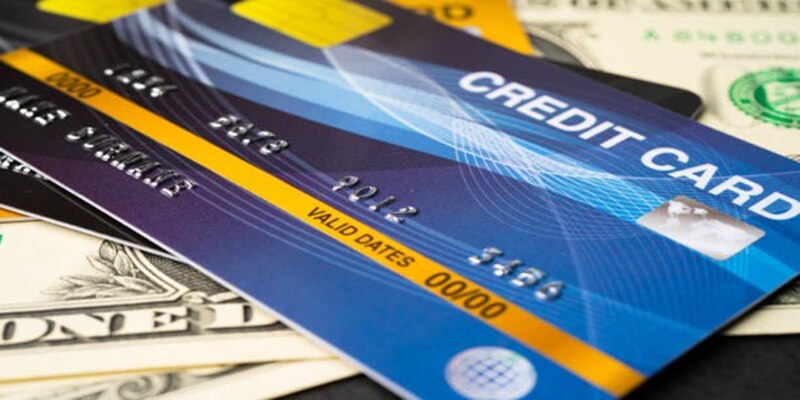

Property Tax Explained: Essential Information for Homeowners
Jan 20, 2024 By Triston Martin
Individuals, businesses, and legal organizations pay property taxes. Most often connected with real estate, this ad-valorem tax is sometimes deemed regressive. Property-specific local governments calculate and impose this tax. Property taxes are usually based on the assessed value of the land and buildings. Many localities tax cars and boats in addition to real estate.
Local communities need property tax money. Water, sewer, police enforcement, fire protection, education, and road and highway building are funded by it. Public libraries and other community services benefit from this funding. Note that deeds of reconveyance do not affect property taxes.
Various countries tax various sorts of properties at varying rates. Understanding local tax regulations is crucial when purchasing property. In most OECD nations, income and value-added taxes provide more federal revenue than property taxes. However, US property taxes are far higher than European rates. Some economists and experts recommend higher property tax rates in developed nations for real estate development, stability, and market efficiency.
Tangible Personal Property Taxes

Business equipment, machinery, inventory, furniture, and cars are examples of Tangible Personal Property (TPP). In the context of property tax by state, TPP plays a specific and significant role. Despite forming a relatively minor portion of overall state and local tax revenues, taxes on TPP are inherently complex. The various assets in each tangible personal property tax category, from industrial gear to office furnishings, make appraisal difficult. This intricacy increases compliance costs for taxpayers and taxation agencies, who must appropriately record and value property.
Moreover, TPP taxes are nonneutral, meaning they do not apply uniformly across different property types or industries. Lack of neutrality may benefit particular industries, creating an unbalanced economic climate. Tech companies with little assets may pay less taxes than industrial firms with large machinery and equipment.
Business development and productivity are greatly affected by tangible personal property taxes. These taxes may discourage investment by raising the cost of machines and equipment. Due to the higher tax burden, businesses may be reluctant to buy new equipment or update assets, limiting growth and productivity. This may hurt economic growth and development. Most states (43) integrated TPP in property tax assessments in 2019. The kinds and rates of property taxed vary per state according to economic conditions and legislative agendas.
Calculating Property Tax
Property tax calculation is critical for property owners and taxing authorities. Applying a tax rate to the property's market value determines its property tax liability. Local governments recalculate tax rates yearly to reflect economic, fiscal, and policy changes. The majority of property tax by state are on real property, including land and permanent buildings. Though most include residential and commercial assets, different states define and classify real property differently.
Municipal governments are crucial to this process. Tax assessors are appointed or elected by local governments to evaluate property. Assessors estimate each property's fair market value, which is used to calculate property taxes. The tax a property owner pays depends on its assessed value. Property value is usually based on size, location, condition, and upgrades.
Property tax payments are scheduled differently across localities. Some areas may require annual payments, while others allow semi-annual or quarterly payments. Most local property tax by state systems enable property owners to engage with the assessor, discuss their property's valuation, and formally contest the assessed rate if they believe it unfair.
One significant feature of the property tax is its penalty for non-payment. When property taxes are unpaid, the issuing authority imposes a lien on the real estate. This lien essentially becomes a legal claim on the property for that amount owed, affecting someone’s ability to sell or refinance their property. Potential buyers are encouraged to thoroughly investigate any pending liens against a property when contemplating purchasing it because such liens can heavily affect how much and even whether one might successfully purchase this area.
Property Tax vs. Real Estate Tax
Property tax and real estate tax are often interchangeable, but there is a slight difference. It is true that real estate tax refers to a property tax; however, not all cases regarding the taxes on properties apply. Outside of real estate, numerous jurisdictions levy a property tax on tangible personal property (TPP) – motor vehicles, business equipment, and machinery. A Tax Foundation notable report discloses that as many as 43 states tax TPP. Under certain conditions, real estate and TPP taxes are deductible when filing Schedule A with income tax returns. 2017 brought significant changes, however, especially with the Tax Cuts and Jobs Act that limited state and local taxes SALT was deductible from federal income taxes at a rate of $ 10 0 per year for married couples and single taxpayers and separated each other’s earnings. Real estate tax is therefore imposed only on real property, while taxes on properties are levied on both the real property and TPP.
Why Are Property Taxes So High in the U.S.?

The Lincoln Institute of Land Policy points out four main factors contributing to the high property taxes in the U.S. and the considerable variation among states: property tax as a revenue source, home values, local government expenses, and categorization procedures for properties.
According to these statistics, 1.32% was the average property tax rate in 2022. However, some cities were far above this average. For example, Detroit recorded a rate of 3.21%, closely trailed by Newark, The headquarters in New Jersey, with
From the state’s point of view, 2019 property tax data from the Tax Foundation indicates that New Jersey had a rate of 2.13%. 1.97% was Illinois, with New Hampshire at 1.89%. On the other hand, states with significantly lower ones were Hawaii 0.31%, Alabama-0.37% and Louisiana as well as Wyoming 0.51%. This illustrates the vast differences in property taxation throughout America, driven by everything from a region’s location to its local economic strategies.
-
 Know-how Jan 26, 2024
Know-how Jan 26, 2024SSI vs. SSDI: Which One Is Right for You?
Confused between SSI and SSDI? Our comprehensive guide helps you choose the right one. Learn the eligibility criteria and benefits today!
-
 Taxes Feb 04, 2024
Taxes Feb 04, 2024Top 9 Features of the SunTrust Prime Rewards Credit Card
Comprehensive guide on SunTrust Prime Rewards Credit Card benefits, including cash back, travel perks, and how to apply.
-
 Investment Nov 26, 2024
Investment Nov 26, 2024How Interest Rate Differentials Shape Global Financial Decisions
Learn about interest rate differentials (IRD) and how they influence currency exchange rates, global investment, and financial decisions in today’s interconnected economy.
-
 Taxes Nov 21, 2023
Taxes Nov 21, 2023Property Tax Exemptions: Do You Qualify?
Find out if you qualify for property tax exemptions and learn how to save on real estate taxes. Learn all the necessary information about it in this read.